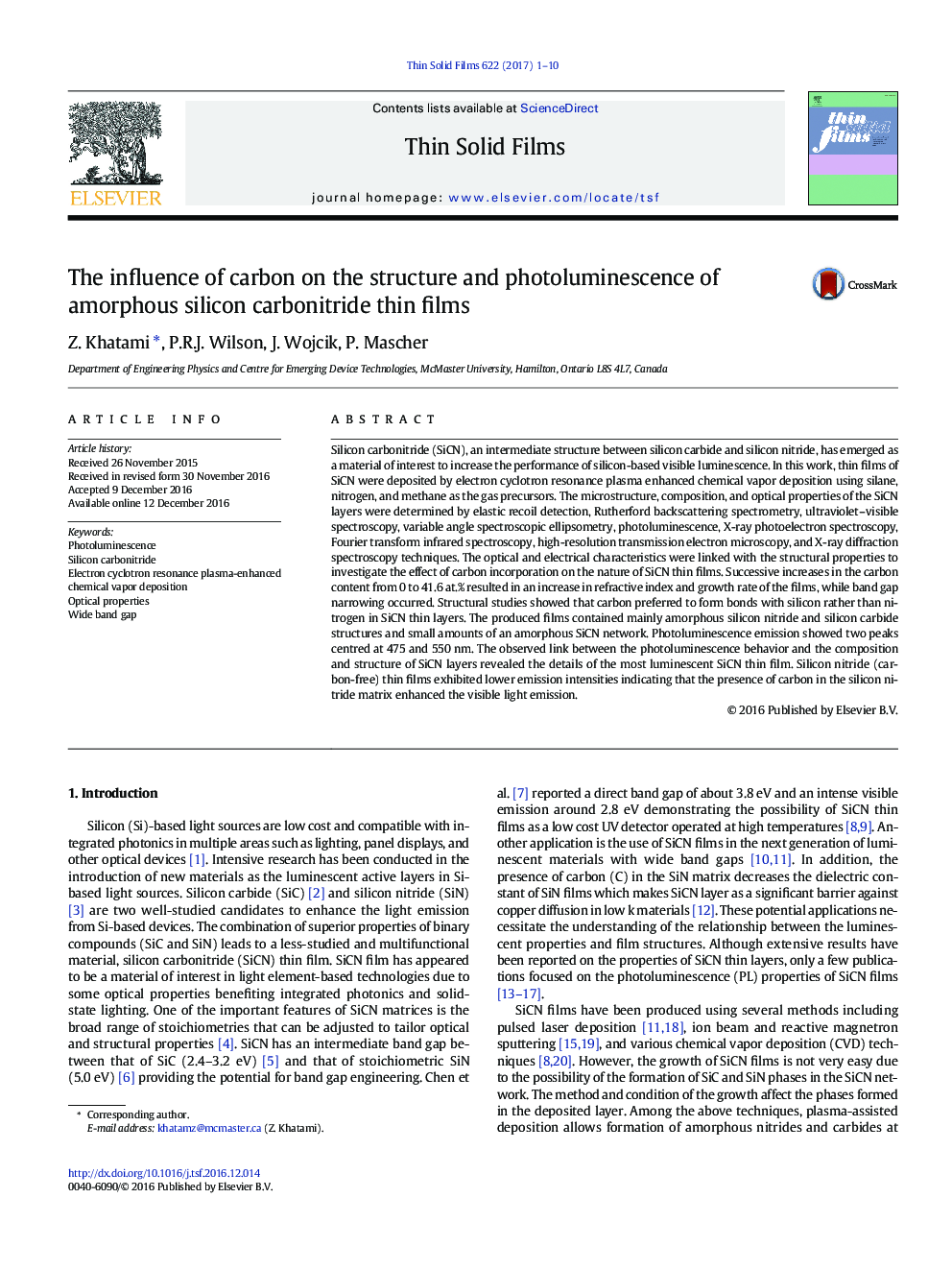| Article ID | Journal | Published Year | Pages | File Type |
|---|---|---|---|---|
| 5466366 | Thin Solid Films | 2017 | 10 Pages |
Abstract
Silicon carbonitride (SiCN), an intermediate structure between silicon carbide and silicon nitride, has emerged as a material of interest to increase the performance of silicon-based visible luminescence. In this work, thin films of SiCN were deposited by electron cyclotron resonance plasma enhanced chemical vapor deposition using silane, nitrogen, and methane as the gas precursors. The microstructure, composition, and optical properties of the SiCN layers were determined by elastic recoil detection, Rutherford backscattering spectrometry, ultraviolet-visible spectroscopy, variable angle spectroscopic ellipsometry, photoluminescence, X-ray photoelectron spectroscopy, Fourier transform infrared spectroscopy, high-resolution transmission electron microscopy, and X-ray diffraction spectroscopy techniques. The optical and electrical characteristics were linked with the structural properties to investigate the effect of carbon incorporation on the nature of SiCN thin films. Successive increases in the carbon content from 0 to 41.6Â at.% resulted in an increase in refractive index and growth rate of the films, while band gap narrowing occurred. Structural studies showed that carbon preferred to form bonds with silicon rather than nitrogen in SiCN thin layers. The produced films contained mainly amorphous silicon nitride and silicon carbide structures and small amounts of an amorphous SiCN network. Photoluminescence emission showed two peaks centred at 475 and 550Â nm. The observed link between the photoluminescence behavior and the composition and structure of SiCN layers revealed the details of the most luminescent SiCN thin film. Silicon nitride (carbon-free) thin films exhibited lower emission intensities indicating that the presence of carbon in the silicon nitride matrix enhanced the visible light emission.
Related Topics
Physical Sciences and Engineering
Materials Science
Nanotechnology
Authors
Z. Khatami, P.R.J. Wilson, J. Wojcik, P. Mascher,
